Today’s post is more modern than most of what we usually cover, but it is about a rifle for which very little information is available. It is a Swedish report translated by Arne Bergkvist – thanks again, Arne! Any mistakes in editing are mine – Ian.
This study is a work of FÖRSVARETS MATERIALVERK, Vapenbyrån, Finkalibersektionen Engineer Per Arvidsson
Lano rifle is the subject. Other rifles in the test will be tested on another occasion.

Background
Until 1989 the standard Swedish service rifle was the 7.62 mm AK 4 (H&K G3). Each platoon (40 soldiers) was equipped with one Hensoldt 4 power rifle scope. The AK 4 and the 4x scope functioned well together. The problem was that the scope mount was not sufficiently rigid, so the point of impact was different from time to time. The mount was also too high for the cheek and difficult to shoot with. To be able to solve a two man patrol task (sniper and observer) on distance combat range, longer than 300 meters, we urgently needed special selected personal with qualified education, and more advanced material than the AK 4.
In 1983, Sweden began testing sniper rifles from several European rifle makers. Most of them were accurate and shot acceptably tight groups, but were not rigid, unreliable, and were heavy, expensive and hard to shoot with. To be frank: they were not made for “one shot – one kill.” Both semi autos and bolt action rifles were tested. The semi automatic rifles were good shooters, but the function was bad and the weight was too much. The most popular rifle was the Austrian Steyr SSG 69, and 39 of these rifles were purchased for testing.
The study lead us to the required specifications:
- “One shot one hit”
Standing man target 800 meter (875 yd)
1/3 man target 600 meter (656 yd)
Head-size target 400 meter (438 yd)
- Maximum weight of rifle 6 kilo (13.2 lb)
- Rifle scope, with 10x magnification, non-adjustable power and simple cross adjustments.
- Scope mount must be 100% rigid
- Detachable magazine
Field Testing
The rifles were tested in troop, technical, tactical and organizational situations. Rifle factories that were interested in participating and developing the future sniper rifle were:
- FFV (Carl Gustaf 90/CG 2000)
- Lano (Lano S)
- Lakelander (m/375)
- Mauser (m/86 SR)
- Steyr (SSG Sweden)
- Accuracy International (PM)
- Parker Hale (m/85)
The suppliers had the opportunity to choose the rifle scope they wanted, within the demanded brands (Swarovski, Leupold, Tasco, Schmidt & Bender and Hensoldt) and specifications for 10 power non adjustable scopes. The test ground was Swedish Army Infantry camp (I 4) in Linköping and Infantry camp ( I 21) in Sollefteå, from September 1986 to May 1987.
All members in the test group had the opportunity to be a part of the testing, in both normal and extreme winter conditions. They would use and shoot with competitors rifle and discuss experiences with officers and snipers. The results from this testing were much appreciated by the involved participants. Even personnel from USMC “Scout Sniper Instruction School” participated during March 1987 and gave valuable feedback.
The evaluation of the test rifle produced three winners: Accuracy International, Lano and Mauser. Price requests and delivery procedure and time schedule from the factories were requested, and showed that Accuracy International and Lano were the best choices. The testing also showed that only Hensoldt and Schmidt & Bender scopes were able to stand the testing. The other rifle scopes did not withstand the severe weather conditions and were rejected. Accuracy International and Lano together with Hensoldt and Schmidt & Bender scopes were ordered for the final trials in 1988/89. The material was to be modified at a number of places, to make all attendants happy.
Final Testing
To this “grand finale,” the following companies were invited:
Rifles: Accuracy International, Lano
Rifle scopes: Hensoldt, Schmidt & Bender
Bipod: Parker Hale
Silencer: Vaime
Ammunition: Norma, Lapua, Sako
Silencers had been tested by the Swedish government since 1983. The reduction of the firing sound will make it harder to find the sniper after “one shoot-one hit.” In addition, silencers reduce recoil and muzzle flash. The Vaime silencer was tested earlier by the army and especially the model that mounts far back on the barrel is interesting because it keeps the total length down, and also reduce the noise well. Accuracy is not affected by the silencer as long at the bullet not touching the inside of the tube. A small change in point of impact can be seen, but is easy to adjust on the rifle scope.
Conclusion
The rifle factories still in the test were very enthusiastic on the task, and spent time perfecting their entries, after finding things that could be improved. There was a positive feeling from both the rifle factories and the troops involved, and a positive exchange of information took place. The project started in 1985 with the initial specifications and ran for four years. The chosen rifles were purchased in 1990, with Lano being the winner.
The idea behind the Lano invention is that “If the bolt always is in the same position at absolute center of the chamber, steering the cartridge, when fire the rifle, it will be best for the accuracy!”
Technical Specs
Origin: Sweden
System: Lano bolt-action repeating mechanism
Caliber: 7.62×51 mm NATO
Magazine capacity: 10 rounds, detachable
Overall length: 1150 mm (45.25 in)
Barrel length: 660 mm (26 in)
Barrel twist: 1 revolution in 12” (1 rev. in 305 mm)
Weight: 6 kg (13.2 lb) with magazine and scope
Stock: Fiberglass, with adjustable length and cheekpiece
Bipod: Detachable (Parker Hale m/85 type)
Optic: Schmidt & Bender 10x42mm mildot type tritium scope with adjustable center bore
Weight of scope: 580g (20.4 oz)
Accuracy: 5 shots within 20 mm /100 meter (0.8″ @ 109 yd)


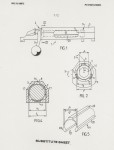
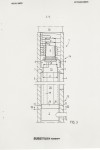
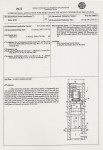
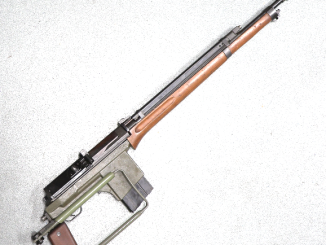
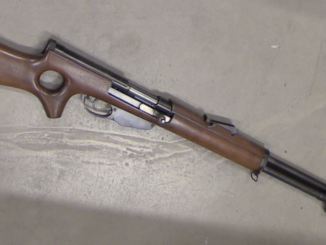

Shouldn’t the very last line under “Technical Specs” read “20mm / 100 meters ( 0.8″ @ 110 yards )” or, conversely, “20mm / 91 meters ( 0.8″ @ 100 yards )” ?
I forgot to add that it should probably be the former conversion.
Up at the top, the figures for range in meters and yards are switched;
“One shot one hit”
Standing man target 800 meter (727 yd)
1/3 man target 600 meter (545 yd)
Head-size target 400 meter (364 yd)
Should be;
Standing man target 800 yards (727 meters)
1/3 man target 600 yards (545 meters)
Head-size target 400 yards (364 meters)
Unless they really meant this;
Standing man target 800 meter (875 yd)
1/3 man target 600 meter (656 yd)
Head-size target 400 meter (438 yd)
Which is more likely as the Swedish Army works in MKS, not English.
cheers
eon
Whoops – you’re right. Sorry!
The only thing I would change is the mounting of the scope. I always preferred a lower mount to reduce the head exposure and to bring the centerline of the scope closer to that of the bore. To do this we re-machined the ring mount grooves in the receiver dead paralell to the bore and mounted four rings instead of two. Then we center-bored the rings dead paralell to the bore and mounted the scope using an alternating tightening pattern. This increased the rigidity and helped withstand the recoil from the .300 Win. Mag. rounds we used. I REALLY like the bi-pod mount. Wish I had one!
Oddly, other sources seem to indicate that the rifle actually adopted by the Swedes as the Psg-90 (Prickskyttegevär = “Sniper Rifle”) was the AW (Arctic Warfare) improved variant of the UK L96A1 from Accuracy International. Was the decision to go with the Lano rifle later reversed?
But Sweden has been using Psg 90 (L96A1 AW from Accuracy International) since 1990. Swedish wikipedia (you can probably run it through google translate to get an overview): https://sv.wikipedia.org/wiki/Prickskyttegev%C3%A4r_90
I have to admit a general ignorance of current-use Swedish arms…I don’t know what the disconnect is between the Lano being accepted and the AI being in current use.
Dear Bill Bullock,
You could buy a Bren bipod, that`s where Parker Hall got the idea from
Hey Ian!
If you are interested I have found a better picture for your article, which can be found here: http://digitaltmuseum.se/things/prickskyttegevr-frsk/S-AM/AM.125580
It is marked as creative commons so as long as you give credit it is free to use.
Regarding why the Accuracy International was adopted instead of the Lano, it came down to price. It was cheaper to use the AI, and the difference between the two didn’t motivate the price hike for the Lano.
“If the bolt always is in the same position at absolute center of the chamber, steering the cartridge, when fire the rifle, it will be best for the accuracy!”
Was it approve or negate in trials? Does it has any xor noticeable xor neglible improvement in accuracy?
Apparently the Lano sniper rifle production was owned by Sako. This Armémuseum’s (Swedish Army Museum) early example claims that the Lano rifles were made in Finland:
https://digitaltmuseum.se/021025920804/prickskyttegevar-forsok
In this latter example, the stock is already very similar to what would become the Sako TRG (TRG was developed from Valmet Sniper M86, Tikka M65 and apparently the Lano sniper rifle):
https://digitaltmuseum.se/011024477079/prickskyttegevar-forsok